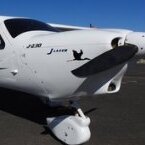-
Posts
3,464 -
Joined
-
Last visited
-
Days Won
47

RFguy commented on Admin's video in Training and Student Pilots

Tagged with:

RFguy replied to danny_galaga's topic in Engines and Props

RFguy replied to skippydiesel's topic in Instruments, Radios and Electronics

RFguy replied to skippydiesel's topic in Instruments, Radios and Electronics

RFguy replied to skippydiesel's topic in Instruments, Radios and Electronics

RFguy replied to Garfly's topic in AUS/NZ General Discussion

RFguy replied to Garfly's topic in AUS/NZ General Discussion

RFguy replied to Garfly's topic in AUS/NZ General Discussion

